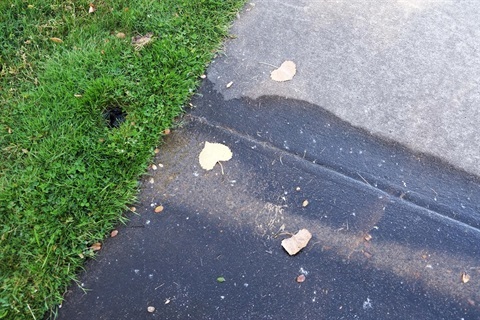How to Check for Leaks

Leaks can come from dripping taps, leaking toilet cisterns, faulty hot water services, broken garden sprinklers, damaged pumps, leaking frost valves, faulty evaporative coolers... just to name a few. A few drops of water here and there may not seem like a big problem, but it can add up. Undetected leaks can cost thousands of dollars annually to customers across who don’t monitor water usage. If only there was a quick way of seeing if there is a leak on your property??
The 2-minute leak test
Step 1
Write down the current read on your meter. It is important you record the reading on each dial.
Step 2
Wait two minutes, then write down the meter read again. You should also watch the dials on your meter at this stage to see if they are moving.
- If the numbers are slightly different and the dials moved slightly, this can either be a small leak or could be a result of dripping taps or faulty appliances. In this situation we encourage you to check your appliances.
- If the numbers are significantly different and the dials are moving rapidly, this could indicate a significant leak. In this situation we encourage you to contact a licensed plumber to investigate. This investigation as well as any repairs or additional costs will be at your own expense.
- If the numbers are the same and the dials have not moved, this means there is unlikely to be a leak at the property.
That’s it. It only takes two-minutes to leak test your property.
It is important when conducting the test, to make sure that no water is being used inside the house, garden or anywhere else on the property. Also make sure the following items are checked and turned off before conducting the test.
- That you haven’t recently flushed the toilet – wait 5 minutes before conducting the test to ensure the cistern has refilled.
- That you don’t have the dishwasher or washing machine running.
- That you don’t have evaporative cooling turned on.
- That no garden irrigation or sprinkler system is on.
- That your stop tap is turned on (if you turn it off no water will pass through the meter making this test redundant).